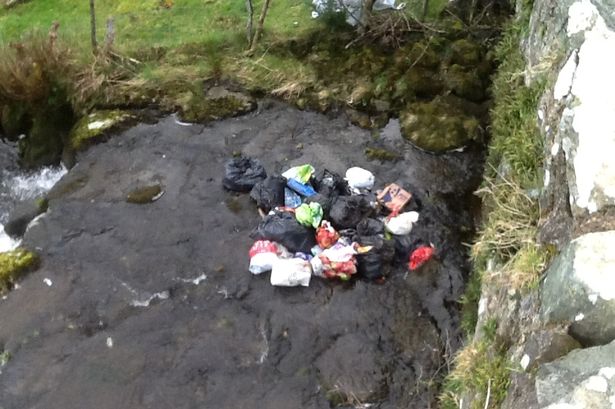[ad_1]
Short roping is a range of techniques that cover the use of the rope to protect and give confidence to members of a party on scrambling terrain. The techniques employed depend on the difficulty of the terrain and the competence and experience of the party.
The techniques are an extension of those used in alpine environments and provide climbers with a compromise between pitching the route (safe, but slow) with the speed of moving un-roped (fast, but potentially dangerous). Short roping also has the advantage that by dividing the route into smaller sections there is better communication, less rope drag and less danger of the rope knocking down debris.
Short roping involves shortening the rope by wrapping coils around the body and then tying them off so that between 2m and 20m of rope connects the leader to the rest of the party. The amount of rope out depends on the terrain and the techniques being adopted. At one extreme confidence roping on exposed, but non serious terrain will only need 1m-2m of rope out whilst at the other extreme hard, sustained sections of climbing may need up to 20m of rope out in conjunction with belays and leader placed protection.
Short roping can be used in both ascent and descent and is normally deployed on terrain that is exposed and where the consequences of a slip are both serious and possible. It is most often used where the route has ground that the party feel competent climbing interspersed with short technical sections or the odd hard step – the party staying roped-up along the whole route, but adjust the amount of rope out and the protection techniques according to the relative difficulty of the terrain.
Short roping requires constant re-evaluation and needs good situational awareness and an ability to change techniques quickly and safely. This is quite a skill and the ability to make the judgments about which technique to use and when only comes with practice. It is all about correctly matching the team’s ability with the section of route at hand and choosing an appropriate rope technique.
On easier terrain take chest coils so that there is 10-15m of rope between you and then take small, neat hand coils so that there is 2-3m of rope free between members of the party. There should not be too much rope in your hands – a good guide is that if you can not close your hand around the coil then you are holding too much rope. The most capable climber normally goes in front and the team move together at a speed which keeps the rope off the ground, but which does not restrict movement. It is vital that there is no slack in the system and that the hand coils are locked off to prevent any slip becoming a serious fall.
On more serious and difficult terrain where you want some protection or where both hands are needed to make progress, but where all members of the team still feel confident that a fall is unlikely you need to use a different system. This involves dropping the hand coils and climbing simultaneously, placing runners in the rock as well as weaving the rope around natural spikes and blocks to give the team members protection. It is recommended to have at least three pieces of protection as running belays on the rope at any one time and as the seconds remove a piece of protection the leader places another one. Once again all the climbers should move at the same speed and avoid any slack building up in the system.
On more difficult sections where a fall is quite possible then you will need to revert to pitching the route until easier terrain arrives. It may be necessary to extend the rope, but try not to have more than about 20-25m paid out between the climbers – treat these sections as mini-climbs by taking proper belays, placing runners as required and belaying as normal. Once again try to keep the pitch lengths short and utilise natural anchor points such as spikes and blocks – this will make communication easier, the rope will most likely run straighter and pitches can be done quickly and efficiently
All these techniques require each climbing partner to make judgments on the move and should be practiced in a safe learning environment before being used in the mountains for real.
Rope Coils for Scrambling
There are several ways to set up coils — soft lock or hard lock and high or low.
Soft locked coils are easier/faster to adjust for length, but there is serious risk of the coils tightening under load — this can be uncomfortable at best or but has also been known to impede breathing. Thus it is recommended to always use hard looked coils
When short roping on glaciers high coils (sternum level) should be used as this high anchor point will help keep you upright if you fall into a crevasse, but in a scrambling situation low coils are best as it is easier to hold falls with the anchor point tied off low close to your waist.
[ad_2]




